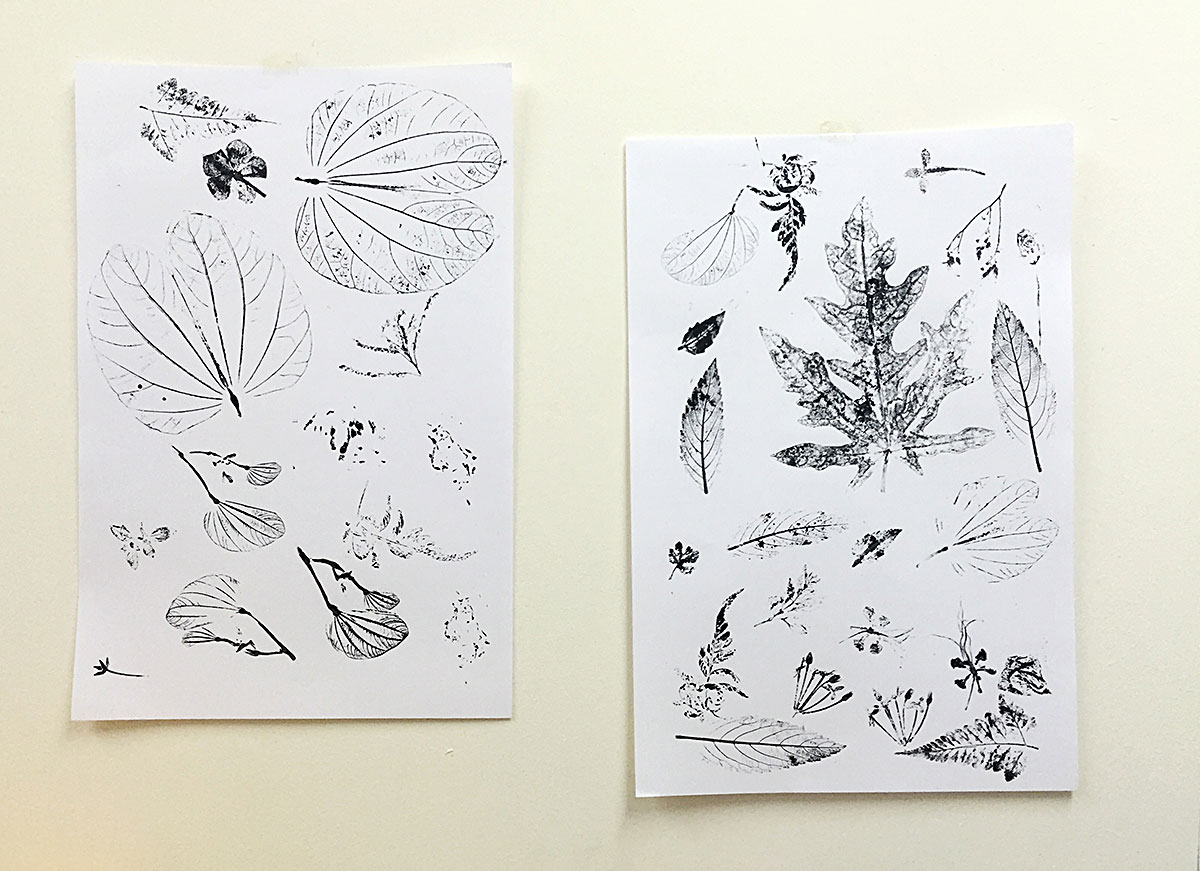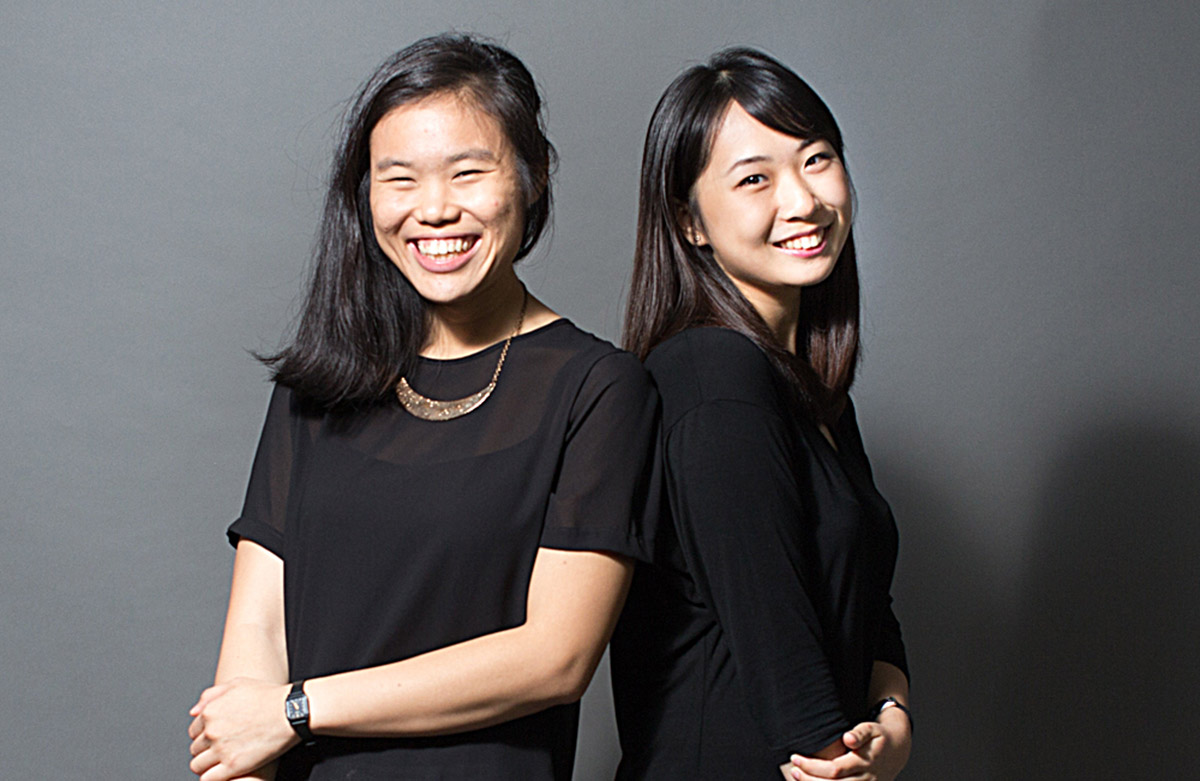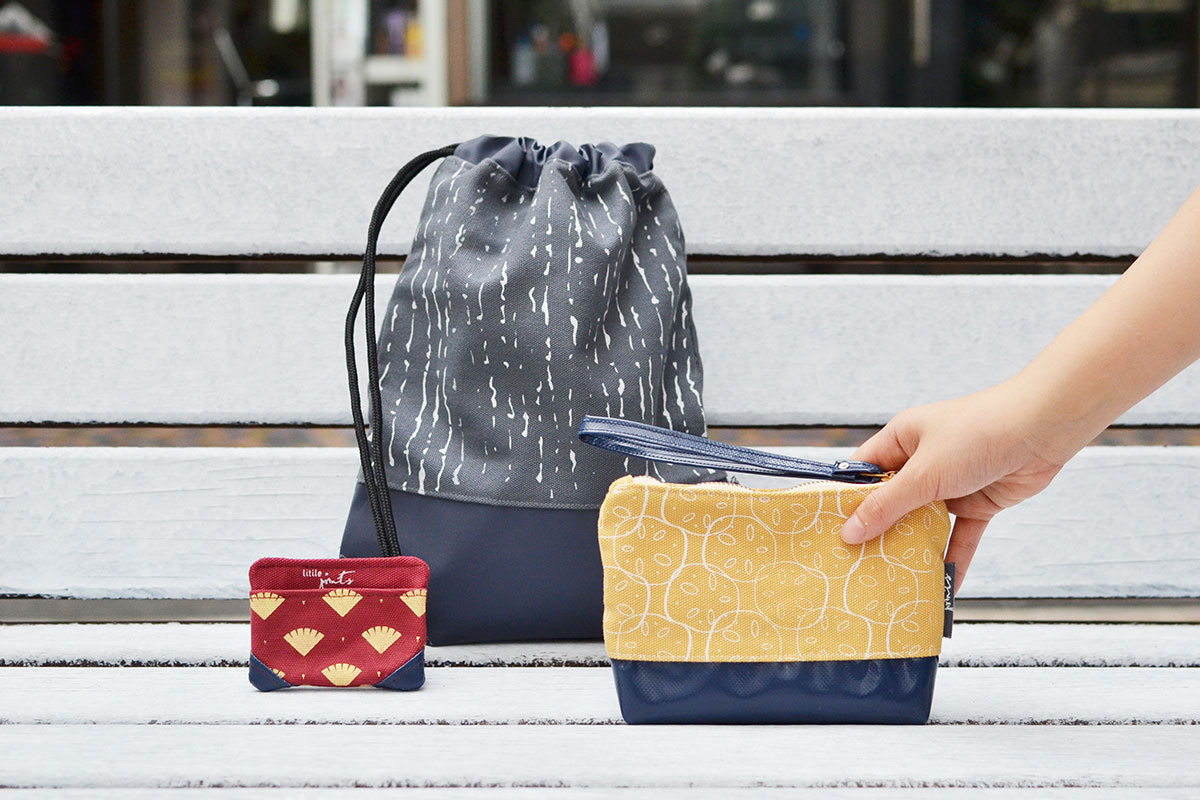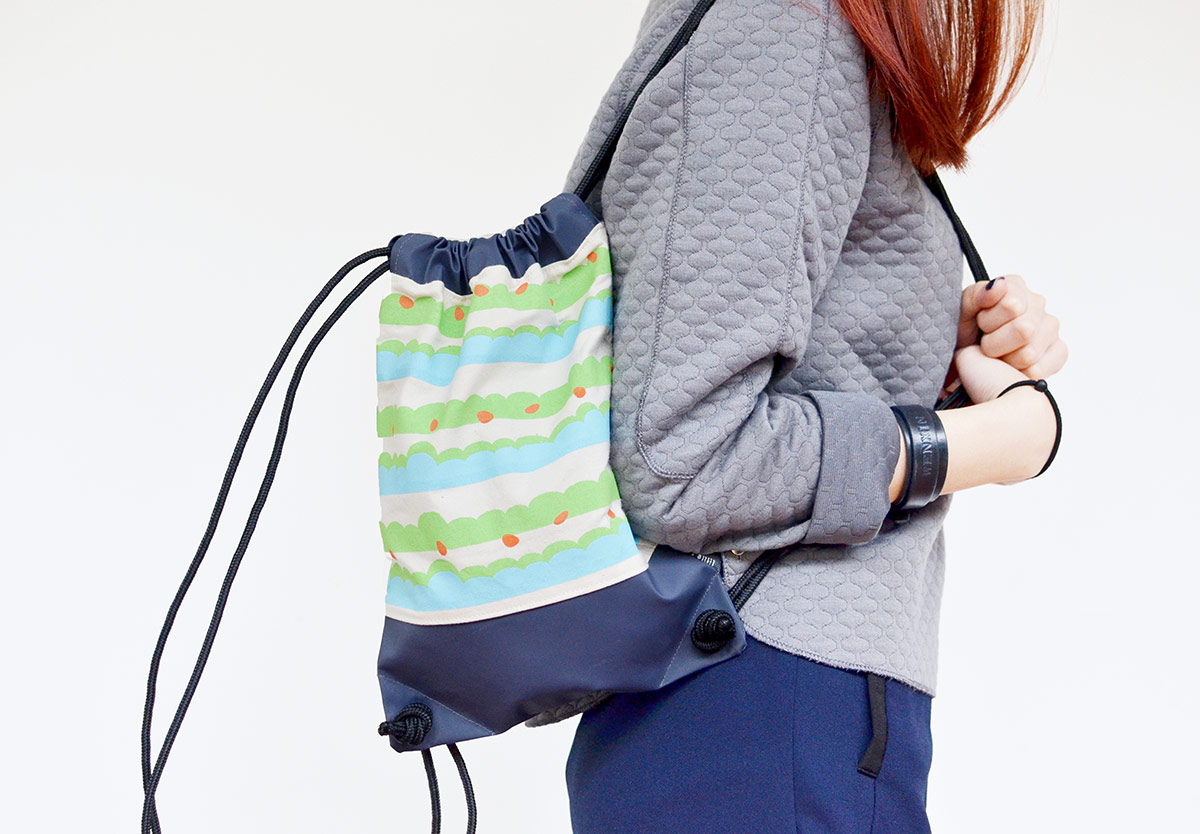Meet Tay Tzeyu and Zhiying Isabel Lim, two young and enterprising designers who create unexpected nature-inspired textile prints for their fledgeling label, Litile Collective.
What is the story behind the name of your studio Litile Collective?
Zhiying: Actually we are also not sure how the name came about! I thought it was a fusion the words “little” and “textile”, but apparently Tzeyu thought it represented the core of our collaboration as a humble little studio that grows organically alongside our collection of works.

Litile Collective’s prints frequently incorporate natural elements, such as the patterns of fallen leaves and fruits.
What made you decide to form a partnership with each other?
Tzeyu: The experience of working together in school seeded the idea of starting our own little studio. After graduating, we were unsure about how we could play a role in the design industry, so it was quite natural for us to continue working together and discover ourselves during this journey.

Zhiying (left) and Tzeyu seek to create works that inspire an appreciation for nature.
Can you tell us more about the different types of prints that you have created and how they came to be?
Zhiying: We share a common interest and curiosity about nature so our prints are mainly based on observable organic elements and phenomena. However, we were dismayed to find that the natural world is almost always depicted in the form of floral patterns and we sought to find an alternative way of understanding and representing nature. Hence, most of our prints are based on uncommon plants and fruits, such as mushroom gills, bittergourd and lotus roots.
Tzeyu: Using the kugua (bittergourd) as an example, we love the bittergourd fruit but we also know many people who absolutely hate it. And so both of us sought to find a way of representing the mild sweetness that is present in the bitterness of the fruit. This inspired us to print brightly-coloured wave patterns on drawstring bags, which are in turn reminiscent of a kugua’s ridges.

Part of the T-series collection, the Kugua drawstring bag features wave-patterns that are similar to those of its namesake fruit.
Apart from screen printing, what kind of techniques do you all employ in creating your works?
Zhiying: We find that we can discover surprising detail and perspective through material exploration. We do quite a fair bit of relief printing – basically inking whatever natural resources we have gathered and then observing the prints that emerge.
Tzeyu: Apart from sketching, one of our favourite tools is the digital scanner app. We often play and iterate on a digitalised doodle or image and see where it brings us.

The T-series collection features quirky prints printed on various sewn tarpaulin accessories.
What do you do to stay inspired?
Tzeyu: Pinterest works for me! I can spend hours endlessly browsing online. It gets me thinking about possibilities. I’m also inspired by my day-to-day travels as they give me time to space out and observe my surroundings. I also like to pick up and examine fallen plant parts as I find them fascinating.
Zhiying: I like browsing the creative works of others online, but too much of it makes me feel small and fearful about stepping out to work out my own ideas! Recently, I’ve also realised that I need regular retreats into natural spaces, like Bukit Timah and MacRitchie Reservoir, to gain fresh perspectives.
Check out Zhiying and Tzeyu’s creations at www.litilecollective.com.
This was adapted from an article originally published in the March 2017 issue of SquareRooms.



